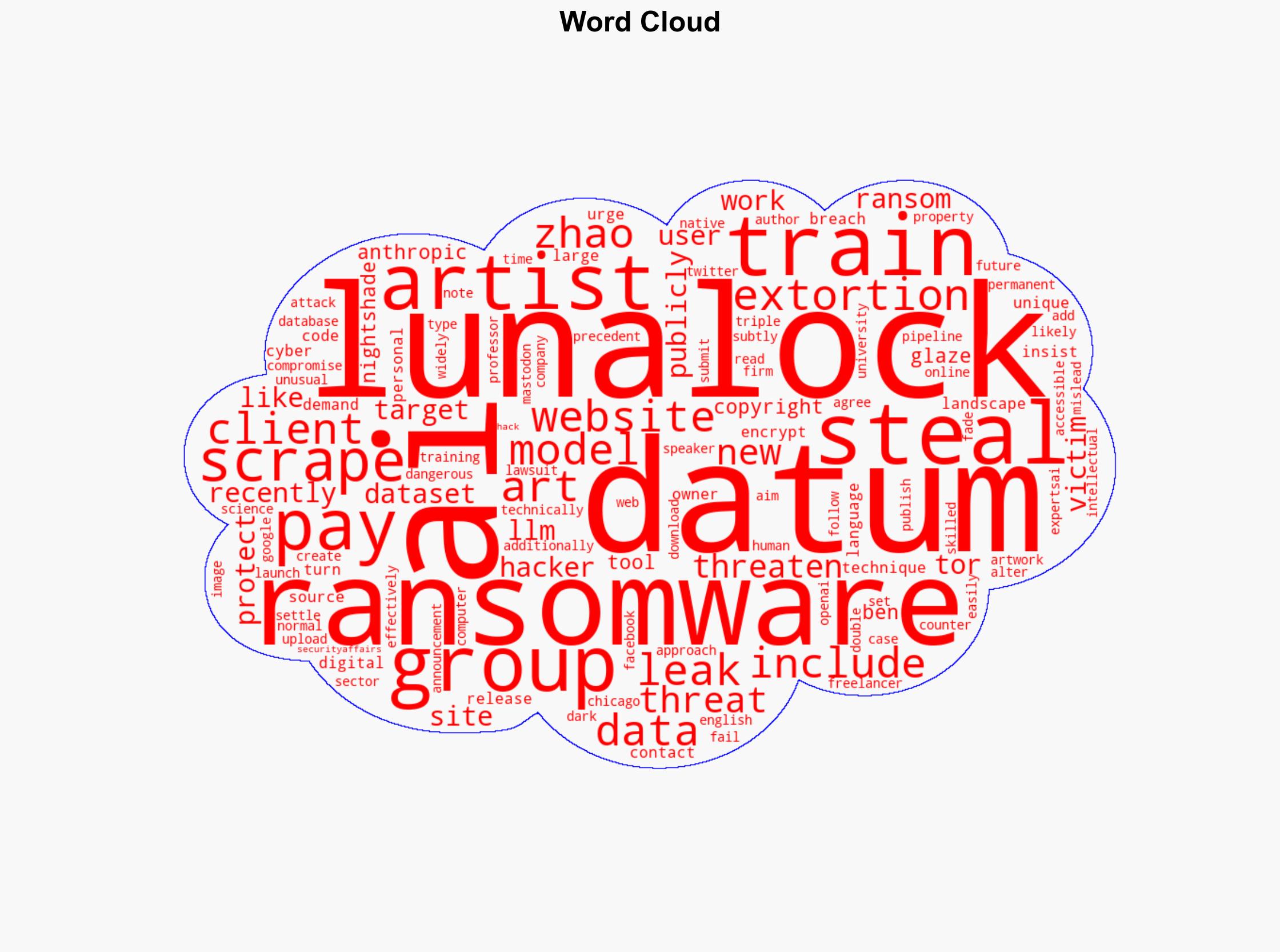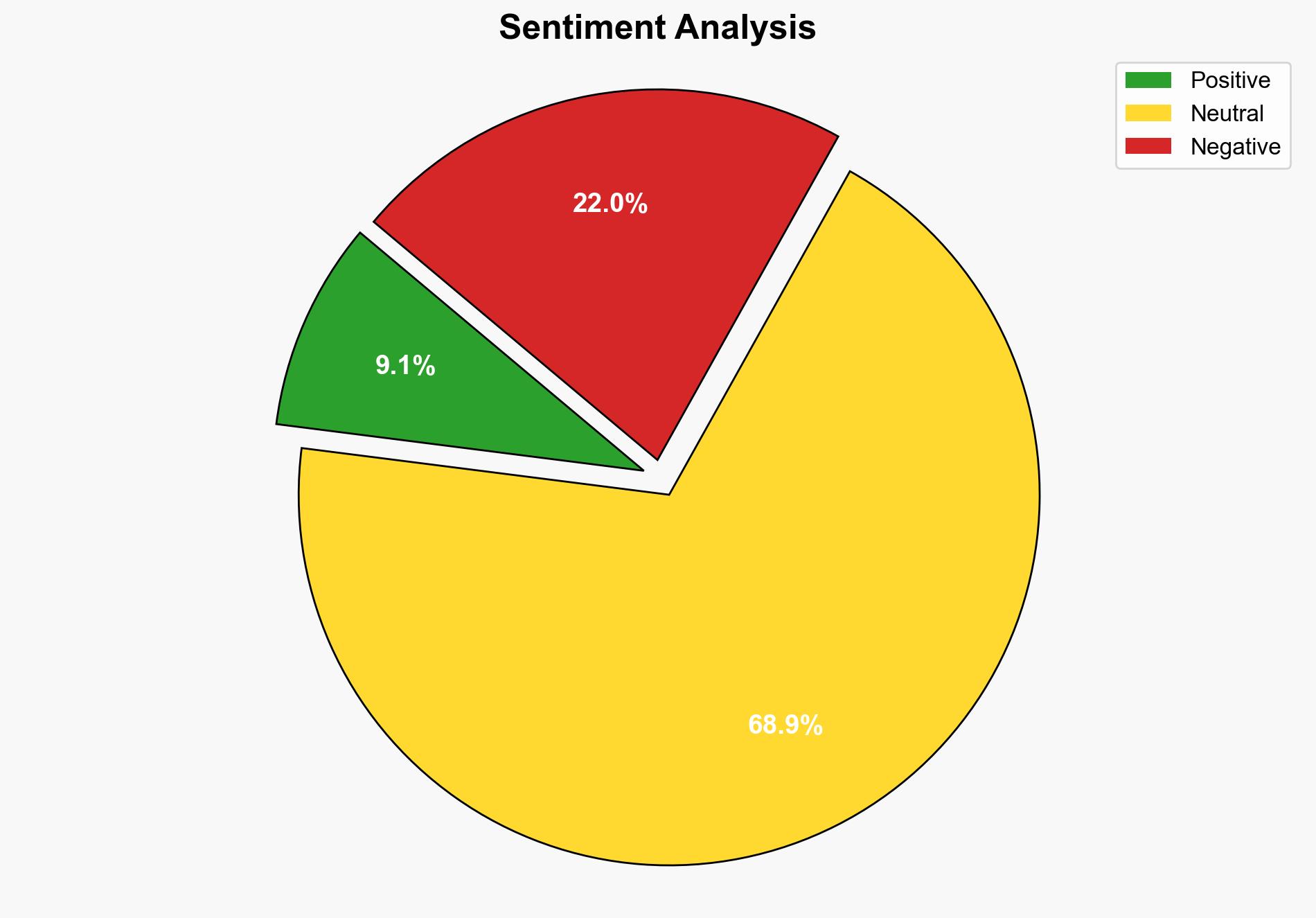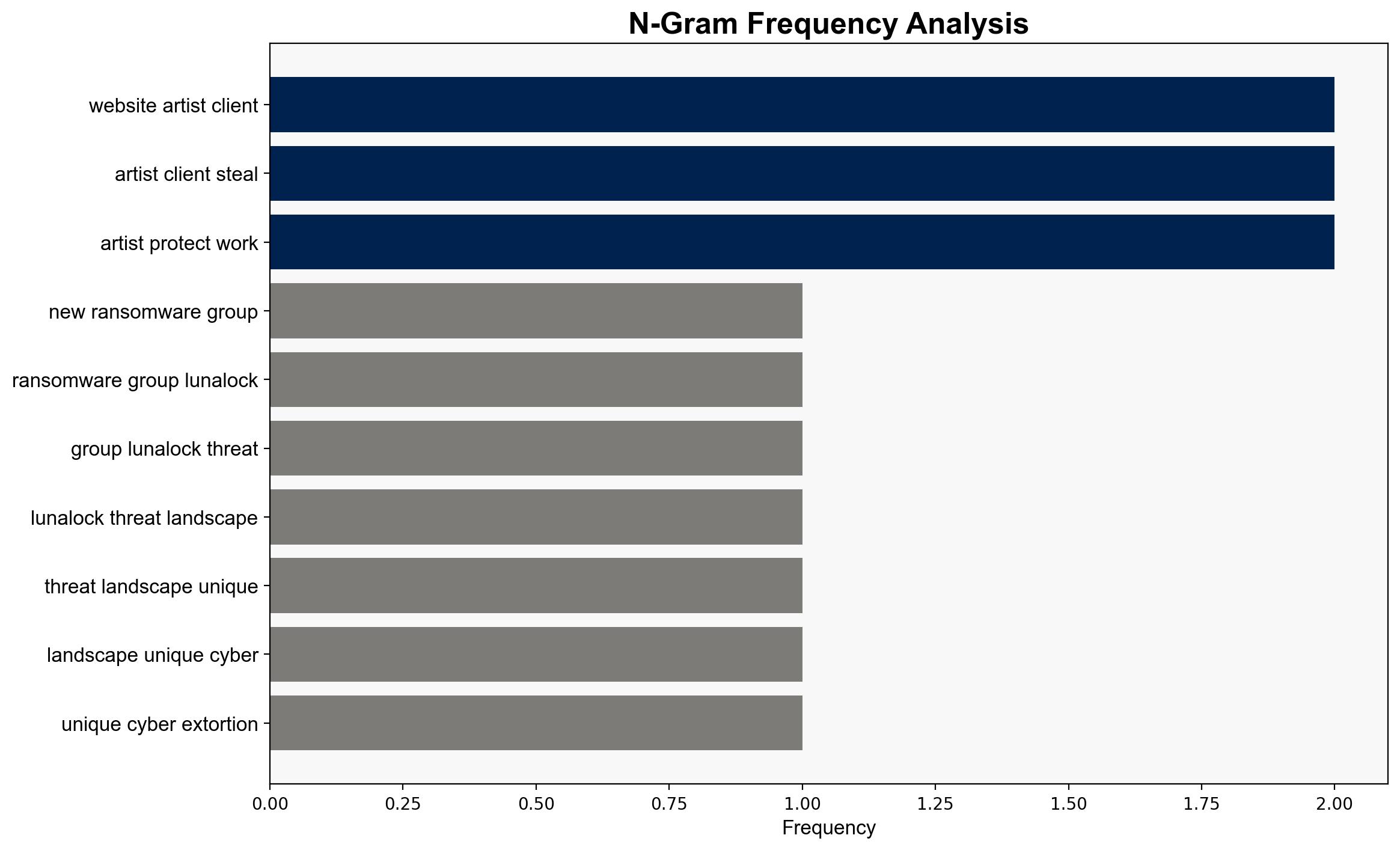LunaLock Ransomware threatens victims by feeding stolen data to AI models – Securityaffairs.com
Published on: 2025-09-09
Intelligence Report: LunaLock Ransomware threatens victims by feeding stolen data to AI models – Securityaffairs.com
1. BLUF (Bottom Line Up Front)
LunaLock presents a novel and potentially escalating threat by integrating stolen data into AI models, setting a dangerous precedent for future ransomware tactics. The hypothesis that LunaLock aims to exploit intellectual property for financial gain and influence AI development is better supported. Confidence in this assessment is moderate due to limited data on LunaLock’s broader objectives. Immediate action is recommended to enhance cybersecurity measures, particularly for sectors vulnerable to intellectual property theft.
2. Competing Hypotheses
1. **Hypothesis A**: LunaLock’s primary objective is financial gain through extortion, leveraging the threat of AI model contamination to increase ransom payments.
2. **Hypothesis B**: LunaLock aims to disrupt AI development by intentionally corrupting datasets, potentially serving a broader agenda of undermining AI advancements.
Using Bayesian Scenario Modeling, Hypothesis A is more likely as it aligns with traditional ransomware motivations and the explicit demand for ransom payments. Hypothesis B, while plausible, lacks direct evidence of a broader disruptive agenda beyond financial extortion.
3. Key Assumptions and Red Flags
– **Assumptions**: Both hypotheses assume LunaLock possesses the technical capability to effectively integrate stolen data into AI models. It is also assumed that the group has a clear understanding of AI training processes.
– **Red Flags**: The absence of detailed information on LunaLock’s leadership and potential state sponsorship raises concerns about attribution and intent. The reliance on publicly available data for AI training could be overstated without evidence of successful integration.
4. Implications and Strategic Risks
LunaLock’s tactics could inspire similar groups to adopt AI data contamination as a standard extortion method, increasing the complexity of ransomware threats. This approach may lead to a chilling effect on digital creativity and innovation, particularly in sectors reliant on intellectual property. Economically, affected companies may face increased costs for cybersecurity and potential legal liabilities related to data breaches.
5. Recommendations and Outlook
- Enhance cybersecurity protocols, focusing on data encryption and secure backups to mitigate ransomware impacts.
- Develop industry-wide standards for AI model training data integrity to prevent contamination.
- Scenario Projections:
- Best Case: LunaLock’s tactics are quickly neutralized, and affected sectors implement robust defenses.
- Worst Case: Widespread adoption of AI data contamination leads to significant disruptions in AI development.
- Most Likely: Increased ransomware incidents targeting intellectual property, prompting regulatory and technological responses.
6. Key Individuals and Entities
– Ben Zhao: Computer Science Professor at the University of Chicago, developer of tools to protect against AI data scraping.
– AI firms like OpenAI, Google, and Anthropic, which may be indirectly affected by data contamination threats.
7. Thematic Tags
national security threats, cybersecurity, intellectual property protection, AI development, ransomware evolution




